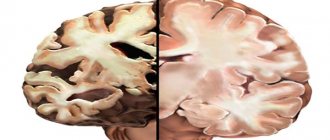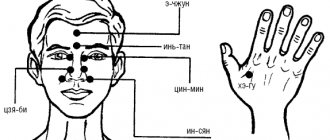“Tell me and I’ll forget, show me and I’ll remember, let me do it and I’ll understand.” The book “Delegation and Management” by Confucius (representative of ancient Chinese philosophy).
Most perceive psychology as a complex of life phenomena. Although, on the other hand, this is a system of proven knowledge, with its help various practical and purely scientific problems are solved. In the 16th century, “psychology” was first mentioned as a field that deals with the study of phenomena from the mental and mental side. In the 17th-19th centuries, the field of study grew significantly and included processes at the unconscious level. And since the 19th century, psychology has been an experimental field of scientific knowledge.
What is Gestalt psychology?
Gestalt psychology is a direction in psychology that arose during a crisis period in science (1920). The founder was M. Wertheimer, work on the idea was continued by K. Levin, V. Keller and K. Koffka. Gestalt psychology originated in Germany and became a kind of objection to the program developed by Wundt.
Human visual consciousness was studied. Based on the results obtained, a new unit “gestalt” was developed (gestalt in psychology is a unitary form). Its essence is that people tend to understand the world around them as a consistent integral structure, and not each element separately.
Proponents of Gestalt psychology denied the effectiveness of structural psychology (consciousness is divided into blocks) and everything that it focuses on. They even formulated a kind of law stating that “the whole is in any case greater than the totality of its constituent elements.”
According to Wikipedia, initially the subject of Gestalt psychology was the phenomenal field. In the future, the topic expanded significantly: it included questions about problems of mental development, the range of needs of individuals, memory and extraordinary thinking.
Methods
In modern psychology, the practice of Gestalt therapy is a new stage in personality development, providing the opportunity to painstakingly work with internal abilities, desires, and beliefs. Thus, already existing boundaries are violated, and the individual, on an intuitive level or by the method of internal analysis, must determine his attitude to everything that happens without increased pressure from the outside. When choosing the practice of psychoanalysis, you need to consider the most rated methods of Gestalt therapy.
"Hot chair" and "empty chair"
Gestalt therapy is a well-known form of psychotherapy implemented in the process of interaction between emotion and mind. It is important to learn to understand yourself and voice your own problems. The “hot and empty chair” technique is of particular interest to Gestalt therapists from the Moscow Gestalt Institute, and is appropriate for implementation in group communities. The basic principles of this methodology are presented below:
- “Hot chair” is a frank dialogue between a patient and a psychotherapist, when all the surrounding listeners remain deathly silent. Only at the very end of the conversation can they express their attitude to what they heard, share their emotions and subjective experiences. A “hot chair” is a place where a person sits with his mental problems in the hope that after pronouncing them, the right solution, emotional balance, will come.
- An “empty chair” is a place for the culprit of a person’s emotional distress. The patient will have to tell him about all his problems, openly voice his own fears and experiences. It doesn’t matter whether a living, imaginary or dead interlocutor will sit on an empty chair. The main thing is to voice the problem and hear it from the outside, to move from theory to practice.
Article on the topic: Sciatica - what it is, symptoms, causes and treatment of the disease
Working with Polarities
This is a search for the “golden mean”. A person is accustomed to reacting to situations in his extreme emotional states. This has a bad effect on the psyche, state of mind, and worldview. It is necessary to learn to live in harmony with oneself, and to realize such aspirations not only in theory, but also in practice. The principle of the “Golden Mean” is the ability to vary in any situation, without driving yourself to extremes.
Working with dreams
In Gestalt therapy, special attention is paid to night dreams, which are clues of the human consciousness. If, after waking up, you remember what the dream was about, you can better understand yourself and find a compromise with your inner self. The main thing is to take this method seriously, and to decipher it, use only verified sources, but also your own intuition.
The emergence and development of the school of Gestalt psychology
Gestalt psychology was born after one very important experiment by Max Wertheimer called the “phi-phenomenon”. The essence of the study: using a tachostoscope and a strobe, the scientist observed two straight lines (stimuli) in the participants, transmitting them different speeds. Thus he found out that:
- lines are perceived sequentially if the gap is large;
- the lines are realized simultaneously if the gap is minimal;
- awareness of movement appears (the testee followed the movement of the line in a certain direction, and not two together or one after another);
- “phi-phenomenon” if the gap is optimal (exclusively pure movement is perceived, the subject understands that there is movement, but without changing the position of the line itself).
He outlined the results of the experiment in detail in his work in 1912. This and his other works attracted the interest of many famous scientists of the time. Further, Gestalt psychology acquired many representatives, the most important of which is K. Koffka.
The results of his own research are shown in Perception: An Introduction to Gestalt Theory. In 1921, the book “Fundamentals of Mental Development” was published, which tells about the formation of child psychology. The work was extremely popular both in Germany and abroad.
Koffka's research on perception in children revealed a number of interesting patterns. One of them: initially, the child actually owns a set of partial and not very logical images of the entire external world. Then the scientist decided that perception is strongly influenced by the ratio of figure and background on which the object is located. Afterwards he formulated the law of transduction in psychology. In the Gestalt school, this is one of the theories of perception, briefly outlining which it turns out that children are aware not of the colors themselves, but of their combinations.
The main principle of this direction of psychology
The principles of Gestalt psychology are not as diverse as in other areas of science that study human personality. In fact, there is only one main principle, and the remaining theses concerning specific patterns are its derivatives.
The main basic principle is as follows: analysis, cognition and study of parts separately cannot lead to an understanding of the whole. The whole (be it a process of consciousness, perception, or something else) is determined not by the sum of its parts, but by their mutual dependence and connections.
Gestalt, what is it in psychology: ideas, laws and principles
Consciousness is what the Gestalt psychologist, as a representative of the school, works with. In essence, it is a living whole in which all the constituent elements interact with each other. A good analogy: the human body as a whole consists of many systems that work harmoniously and regularly for many years. Gestalt psychology is based on the following basic concepts:
- What is Gestalt? A measure of consciousness, a certain figurative configuration.
- Gestalt psychology uses consciousness as its subject of study. Its study is based on the use of the principle of integrity.
- Observation and description are the main research methods. Perception does not come from sensations, they are unreal. It comes from hearing, as from a reflection of changes in air pressure.
- Visual perception comes first. This is the leading process in psychology, determining the degree of development of the psyche.
- Thinking is the process of solving problems using structured fields. Through insight in the present time.
Basic laws of perception in Gestalt psychology:
- Transposition. The psyche responds to a complex of stimuli, and not to each one separately.
- Constancy. All processes strive for immutability.
- Proximity. The tendency to combine adjacent elements into one whole.
- Figure and background occupy one of the most important places in Gestalt psychology. Each figure is an isolated whole, the background is something dynamic behind the figure.
- Law of Pregnancy. The tendency to react to the most constant and simple figure among all possible ones.
- Closure. If a person sees something incomprehensible, the brain tries to transform the information into something that is familiar to us.
Gestalt psychology is a direction in psychology in which all the laws of perception are in contact with each other using certain principles:
- intimacy;
- isolation;
- common area;
- similarity;
- adjacency;
- integrity.
The Gestalt theory of perception focuses on 3 constants:
- Size. It remains unchanged, regardless of changes in its position on the retina.
- Form. It always remains constant.
- Brightness. The brightness of an object remains constant, even as lighting conditions change.
Advantages and disadvantages
When studying Gestalt therapy in detail, it seems to be a holistic and harmonious system without flaws. It has many advantages:
- flexible approach, helping any patient in any situation;
- long-term and deep results;
- work on different levels: from the meaning of human existence to the trash can that the husband cannot take out;
- refers to humanistic directions, since it is focused on the individual and subordinates all available methods to it, and not vice versa.
However, there are a number of points due to which criticism does not weaken and only gains momentum year after year:
- duration of treatment (from several months to several years);
- working with the deep layers of personality is not possible for everyone;
- lack of practical recommendations and direct advice from a psychotherapist - you have to make your own choice and take full responsibility for it;
- lack of logic: there is pure observation of one’s own experiences and feelings without analysis;
- There are few real professionals among Gestalt therapists;
- there is an opinion that patients with Gestalt therapy cannot be people with limited IQ, which means that young children, the mentally retarded and old people suffering from dementia cannot count on its help.
Basically, Gestalt therapy is criticized because its theoretical theories, unlike other directions, are little confirmed by practical research and experiments. And the results of sessions, courses, group and individual lessons are not taken into account, since they are a sublimation of subjective experiences.
As for those who have been in the patient's chair, they criticize her for forcing her to take responsibility for what is happening and constantly work on herself without regard to others. Many people do not like the directness of the statements of psychotherapists, who often violate personal boundaries and provoke strong traumatic emotions.
Gestalt therapy
This is one of the types of psychotherapy, founded by F. Perls in the 50s of the last century. The subject of Gestalt therapy is the contact and boundaries within which a person and everything that surrounds him is located. Contact is the solvation of the needs of the individual with the capabilities of the environment. It turns out that a specific need can only be satisfied by making contact with the outside world. (You can quench your thirst if you take water.)
The main technique of such therapy is a game based on dialogue within oneself. The conversation is conducted with one or more parts of one's own personality. In principle, all therapy is aimed at completing some previously abandoned task - gestalt.
The circle of correct gestalt looks like this:
- A need arises.
- Ways are being sought to satisfy it.
- Satisfaction occurs.
- Contact with the outside world ends.
There are always a number of factors that interfere with the ideal process. If the cycle is not completed, then the person feels exhausted throughout his life and cannot open up to new desires. An incomplete gestalt can cause a serious disruption in the protective properties of the human psyche.
Gestalt psychology and therapy is an opportunity to help “oneself” and find the root causes of internal inconsistencies, to put it briefly. There are a number of exercises aimed at accepting oneself and what lies beyond the real at the same time. They should help you start thinking about yourself and opening up to the world. Find more engaging interactive content developed by leading psychologists on BrainApps. Tests and courses on self-development, over 90 exciting games will allow you to understand your inner experiences even faster and put everything in its place.
Basic principles and provisions of therapy
This doctrine is based on the following concepts and principles:
- Integrity, unity of personality. You cannot divide a person into parts: “soul”, “psyche”, “body”. Such division will not help you come to an understanding of your inner world.
- Creation of Gestalt therapy structures and their subsequent destruction. During creation, a person works through his needs and desires. When the goal is considered complete, the structure must be destroyed.
- Closing Gestalts. During therapy sessions, the doctor helps the patient become aware of unfinished tasks and push him to complete them. Subsequently, the patient transfers the experience gained during the session into everyday life.
- Contact and its framework. The client lives in constant contact with his environment: other people, animals, and so on. There are also “invisible” contacts - energetic, psychological, information fields. The goal of therapy is to create pleasant conditions precisely at the border of these contacts.
- Life “here and now”, acceptance of the surrounding reality. Conscious movement forward, enjoying the current moment of your life, and not making “plans in the sand” or aimlessly working through old mistakes and grievances.
- Taking responsibility instead of placing it on someone else's shoulders. Responsibility is the most important human quality, and it develops in the process of accepting the surrounding reality as it is.
Examples of some principles
A clear example of the above can be any graphic image in which a geometric figure is drawn not with one continuous line, but with many small segments. A person will immediately see the figure and only then distinguish its constituent segments. This is an example of the principle of closure. Graphically, you can represent any of the basic principles in this area of psychology.
The zone of general perception can well be illustrated by any ordinary situation. Let's say a person uses public transport every day. He rides a red tram. Arriving at the stop, he will be waiting for the red tram. If a blue or green carriage arrives, a person will feel confused and begin to look for a sign with a numbered route designation, although he will sit in the red one immediately without looking at it.
The main difference from traditional psychology
The Gestalt psychology of Koffka, Köhler and Wertheimer opposes the traditional ideas of dividing the stream of human consciousness into individual elements and then building complex chains from them.
In the interpretation of German scientists, everything that surrounds a person or happens to him is perceived by him as a whole, and not as a set of components. This means that a person’s feelings accept something in the form of a continuous phenomenon and immediately, and do not reduce it to the sum of the properties and qualities of its constituent elements.
Thus, the concept of Gestalt can be represented as a special structure, the integral function of which is to organize the diversity of the environment.
Principles, qualities, properties
The concepts and terms outlined above are what Gestalt psychology is based on. The main provisions of science from a practical point of view are the properties of perception, their principles and qualities.
The main properties of human perception in this science have the following names, which most accurately reflect their essence:
- Figure.
- Constant.
- Background.
These properties are in constant interaction, ensuring order, form and integrity of human perception.
The principles on which Gestalt psychology is based are the following concepts:
- General perception zone. Everyday emotions are formed on the basis of existing knowledge and experience, taking into account newly acquired information and anticipating expectations.
- Adjacency. The proximity of objects in space or time predetermines their awareness.
- Closedness. The tendency of the mind completes or completes the figure in such a way as to create something unified.
- Integrity. The ability of the brain to simplify what is perceived as much as possible by connecting fragments and details.
- Similarity. Objects that do not differ radically in color, shape, size and smell are perceived together.
- Proximity. Objects or phenomena that are located nearby and have a common characterizing feature are accepted by consciousness as one.
Qualities are formed gestalts. They have their own priorities and uniform laws. The inviolable and fundamental laws of perception include the thesis that the properties of a figure in any situation have higher priority than the qualities of the background. In principle, this is what Gestalt psychology is based on. Humanistic psychology, like methods of personality analysis, is based on other basic theses.
Where the ideas of Gestalt psychology are in demand
The ideas formulated by German scientists at the beginning of the twentieth century formed the basis of transpersonal humanistic psychology. The most prominent representative of this trend is Abraham Maslow. This is a famous American scientist, the author of the “Maslow’s Pyramid” diagram representing human needs.
The ideas of German scientists also form the basis of Gestalt therapy by F. Perls, which is actually an alternative to the method of personality analysis. This psychologist did a lot to develop the basic principles of Gestalt psychology, using them not only in understanding cognitive processes, but also in the worldview in general.









